Istanbul
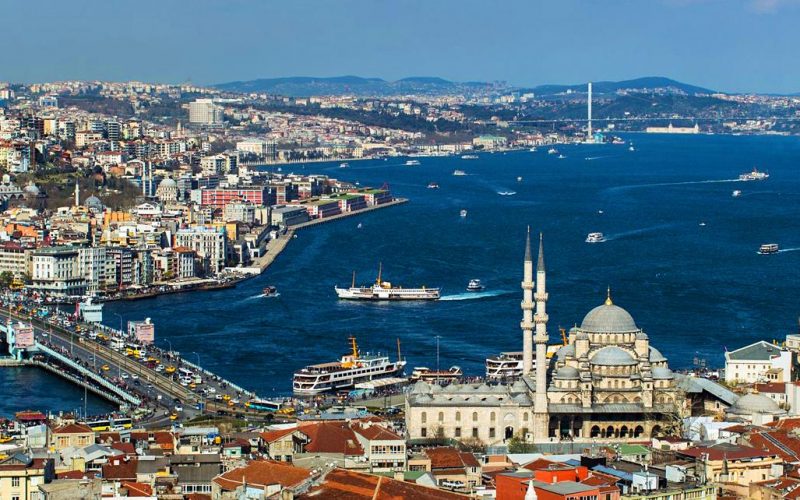
Istanbul
Istanbul served as a capital city to the Byzantine and Ottoman Empires, Today, while being Turkey‘s biggest city, Istanbul population of over six million, Istanbul also takes its place among the world’s largest cities.
Culture, Art
Turkish Bath culture has attracted many artists with its interesting rituals. The mystical worlds of women and the Orient inspired many artists, sculptors, and miniature artists and reflected their images in their works of art.
Festivals: International festivals are organized every year. These festivals, where world-famous local and foreign artists and groups present their films, theatre, classical music, jazz, music, are organized in various places particularly in the Atatürk Culture Center, Cemal Resit Rey Culture Center, Rumelihisari, The Open Air Theatre, Hagia Irini and Sepetciler Kasri.
Almost all of Istanbul becomes a place for participants with its closed and open are as in Istanbul Bienali.
Fairs: Consumer products and services need to be promoted as soon as possible in a competitive environment that becomes more and more compelling. Fairs in different fields such as food, textiles, furniture, industry, souvenirs, paper, leather, and construction material are organized in Istanbul throughout the year for this purpose.
Football: The most interesting sport in Istanbul, just like all of Turkey, is football. The intense competition of Besiktas, Fenerbahce and Galatasaray has exceed the borders of the country.
As the most populous city of Turkey, Istanbul has a cosmopolitan aspect. In addition to the migration from Anatolia, there are many foreigners who are residents of Istanbul. Therefore, life in Istanbul is different from and faster than any other province of Turkey.
The many privately owned hospitals as well as the state owned hospitals provide health care 24 hours a day. All health institutions own or offer ambulance services. In order to use ambulance service all around the country, a single phone number applies 112. The Pharmacies are open during working hours on weekdays, and some pharmacies are open during the nights and at the weekends. 155 Police Help line is at everyone’s disposal.It is the shortest way of accessing the police. All currencies are accepted.
Banks have ATM machines to draw cash and foreign money exchange offices are available in most areas. Certain banks cash traveller’s cheques, in TL only and with a commission.
Sultanahmet
The historical peninsula is the centre of interest for both Turkish and foreign tourists.There is so much to do here in one day! The Grand Bazaar, Hagia Sophia, the Sultanahmet Mosque, Akbıyık Street and Soğukcesme street all wait to be discovered. One of the best features of the historical peninsula is that there are places of worship of all three religions. Just looking upon the courtyard of the Süleymaniye Mosque or the Hagia Sophia garden will make you feel better.
The secret to getting the best out of your visit is to know where to stand and where to look. Be prepared to go into the alleys and for the little surprises. visit to Topkapi Palace gardens, the Gülhane Park, Caferağa Madrasa or Nuruosmaniye to rest. Here you will find peace from the hustle and bustle of Istanbul. Breathing the fresh air and resting will make you feel better. Take a walk down Akbıyık Street to At meydanı, Divanyolu Street, Süleymaniye and the Grand Bazaar. This resting an walking route will allow you to spend hours filled with discovery. This tour of the historical peninsula also includes delightful stops, as the historical peninsula is a feast for the body as much as the soul.
The Hippodrome, known as the Atmeydani (horse arena) during the Ottoman era,served as an athletic ground in Byzantine times. It was also used for horse and carriage races, always for the honour of the Emperor. After Sultan Ahmet the first (1609-1616) had the mosque built in his name, this historical ground was named after him, Sultanahmet.
The Blue Mosque, one of the most famous monuments of the Turkish and Islamic world, is the only mosque built with six minarets. The area where it is located also includes many important works built in earlier periods of Istanbul. The beautiful stained glass work inside the Blue Mosque, known as the Blue Mosque is also famous for its tiles.
The Hagia Sophia, is a masterpiece with a synthesis of the Occident and the Orient, a unique example of architectural applications and is considered to be the one and only example in this respect. It is among the most important monuments have survived to today, now belonging to the history of architecture. Hagia Sophia was used as a church for 916 years and as a mosque for 481 years. It has been a museum since 1935.
The Theodosius Obelisk, The two Obelisk were erected in front of the Karnak Temple in Luxor by the Pharaoh of Egypt, Tutmosis the 3rd in 1490 B.C. for the victories Egypt won in Mesopotamia. The obelisks were made of pink granite of a rare quality.
The Serpent Column, This is one of the oldest pieces of art in Istanbul. The heads of 3 snakes entwined with each other formed the feet of a cauldron. The thirty-one Greek cities that defeated the Persians in the 5th century B.C. melted the bronze trophies they acquired and constructed this artwork of unique quality. The Masonry Obelisk, The imitation obelisk, which is built with carved stones, is situated on the southern side of the Hippodrome. The date of its construction is not precisely known.
The German Fountain, The octagonal domed fountain at the entrance to the Hippodrome was the gift of the German Emperor, Wilhelm the 2 nd. to the Sultan and to Istanbul. It was built in Germany and installed in Istanbul in 1898. The fountain was built in the Neo-Byzantine style and decor with golden mosaics inside.
Binbirdirek Cistern, The second biggest water reservoir of Istanbul was built in the 4th century. Senator philoxenus built his palace on the Hippodrome and built this cistern in order to meet the water needs of the palace. The Basilica Cistern, This is the biggest and most spectacular cistern in the city. The cistern’s entrance is in small building to the west of Hagia Sophia. The ceiling of the cistern, which looks like a forest of pillars, is covered with bricks and crosswise arches.
Topkapi Palace, Many written sources state that the construction of Topkapi Palace started around 1459. It constantly grew and changed just like a living organism. Topkapi Palace is not a building built and completed according to a specific plan. Even during the ruler ship of Sultan Abdülmecid, who ordered the construction of Dolmabahce Palace, and completely left Topkapi palace, the Mecidiyeköy Manor house was built.Other than the manor houses built for the accommodation of sultans, many other structures such as rooms for palace guards, a very large kitchen for palace residents, bedrooms for palace employees, Kubbealti, where the council meetings were conducted.
The Room of Hirka-i Saadet, where belongings of the prophet and caliphs were kept, Gülhane Hospital, Sultan III. Ahmed Library, the Enderun School, the Treasury, a stable for the horses of the sultan, and the Church of Hagia Irene which was also used as an arsenal were also located in the palace grounds. Topkapi Palace was left in the middle of the of the 19th century and lost its function as the center of the state. The palace was turned into a museum in 1924. Weapons belonging to palace collection are exhibited in the Treasury today.
Opening Hours: 09:00 AM – 5 PM every day except Tuesdays.
Entry to the Harem, also open 09:00 AM – 5 PM, requires a separate ticket.
Dolmabahce Palace: Where the present Dolmabahce Palace is situated, there once stood and wooden palace, residences and pavilions of the Ottoman dynasty. In palace of all these buildings, a new palace was constructed during the reign of Mahmud II. Some time later, Abdülmecit has this torn down, and in 1853, he has today’s palace built by the architect, Karabet Balyan, at a cost of five million gold liras. Built on an area of fifteen thousand square metres, the style of the palace has been influenced by the heavily ornamented style of 19th century.
When looked at from the seaward side, a tall ceremonial section in the middle of the palace can be seen, and apartments on both sides of it are connected to each other by covered passages.
Opening hours: 09:00 AM to 04:00 PM everyday except Mondays and Thursdays.
Adress: Dolmabahce Avenue, Besiktas.
Rumeli Fortress: The Anatolia Fortress is situated on the shore of the Bosphorus. Yildirim Bayezid I had it built in 1393 during the preparations for the conquest of Istanbul, and it stands on the site of and old temple to Zeus. The walls are 1.5 m thick and 7 m. high. In the walls are set six half-towers, and in the centre there is a large four-cornered tower, 25 m in height.
Galata Tower: Constantinople was situated in the region between the Halic and the Sea of Marmara. The other side of Golden Horn was Galata, which belonged to the Genoese and thus to foreigners. In a bid to protect their land, the Genoese built the Galata ramparts in 1341, and constructed the Galata Tower in 1348. The tower stood at a bend of the ramparts. At the front of the Tower, ditches were dug for protection.
When Mehmed II seized Galata from the Genoese, he had the tower shortened by about 7 m. The 55 m Higher tower was restored in 1967, a lift was installed in it, and on various floors, a cafe, a restaurant and a casino were opened.
The Grand Bazaar, the oldest bazaar of Istanbul, contains over 3600 stores in an area of 30.700 square meter. The Grand Bazaar is always crowded all day. Craftsmen insistently call customers to their stores. Almost all products produced in and exported from Turkey are sold in big stores.
Handwoven carpets and jewelry are valuable examples of Turkish Art. They are sold with their certificates of quality and exported all around the world. Turkish silver, carpets and jewelry, copper and bronze souvenirs, decorative articles, ceramics, onyx and leather products and high quality Turkish souvenirs constitute a rich collection.
Opening Hours: Every day except Sunday 08:30 AM – 7:00 PM
Spice Bazaar, The Spice Bazaar second biggest closed bazaar of Istanbul, was commissioned by Turhan Sultan between 1663 and 1664 as a part of the Yeni Cami Külliyesi which consisted of a mosque, a line of shops, a tomb, two fountains, and a school. It is behind the New Mosque near the Flower Bazaar in Eminonu. Beside spices and natural herbs, describing Spice Market, it is always possible to find various kinds of fresh dried fruit.
Opening Hours: Every day except Sunday, 08:00 Am – 07:00 PM
Cemberlitas, After the conquest of Istanbul, Cemberlitas was one of the most important and popular districts during the Ottoman era. The settlement included wooden houses and historical buildings but was damaged by frequent fires. Most of them have survived until today through restoration but unfortunately many of them destroyed. Beyazid, Beyazid Square was also used as a square in the Byzantine Era. When Fatih conquered Istanbul, he built the first palace in the area where the Istanbul University is located. The square has gone through various changes throughout history and survived up to the present.
Süleymaniye, The district of Süleymaniye, which is a part of Eminönü, got its name from the Süleymaniye Mosque and Külliye built by Mimar Sinan upon the order of Kanuni Sultan Süleyman.
Laleli is a district whose name was not usually mentioned historically until the 18th century. No important building was constructed in this district during the period between the development carried out by Sultan Bayezit II and the construction of Laleli Mosque after the conquest of Istanbul.
Fatih, The district of Fatih is one of the most famous residential areas of the Turkish era. It bears the title of the conqueror of the city and was built around the first big mosque and soup kitchen of the city. Eminonu, The New Mosque in Eminonu bears the characteristics of 17th century Ottoman architecture.It consist of a külliye, a mosque, a school, a public fountain, hünkar kasri, a bazaar, and a tomb.
Eminönü is a district behind the city walls of Istanbul that is called the “Historical Peninsula” There was a building in this district called Gümrük house in the Ottoman Era and the district got its name from this office. Istanbul was first established in this district. The district is the most crowded area for business life in the afternoon.
Golden Horn (Halic), The Golden Horn divides the European side of Istanbul with its long narrow horn shape. Since it is a natural port, Byzantine and Ottoman Navies and those interested in commercial shipping gathered here. At sunset the water’s color turns into gold and today the shores are surrounded by pleasant parks and walking paths. Up the Golden Horn, Fener and Balat districts include many wooden houses from Byzantine and Ottoman times, as well as churches and synagogues.
Eyüp, In the Tulip Era, the Golden Horn was one of the most significant recreation spots in Istanbul because of its waterside residences, villas and gardens. In the 18th century, when the people who had lost their houses due to fires inside the city walls were moved to Eyüp, the first dense settlements of Istanbul developed.
Beyoglu, The old name of Beyoglu was Pera, meaning “the opposite shore” . In the 16th century, it came to be named Beyoglu (son of the Beg) because of a prince living here in his palace. Located on the north side of the Golden Horn, the district was opened to settlement by the Byzantine emperors in the 5th century and was called Pera. In the 14th century the Genoese walled the district and built the Galata Tower, which is still the symbol of the district today.
Beyoglu expanded towards the two sides of Tunnel and Galatasaray of today. Galatasaray and Taksim grew and became an area for the rich. Beyoglu was the first area to develop its modern infrastructure, such as the tramway, gas line, water lines. The first electrical tramway connected Beyoglu and Sisli in 1913.
Sisli – Nisantasi, Nisantasi is part of Istanbul where socialites can be seen. Featuring fine shopping, a haven for cafes and brasseries, a rich neighbourhood, and a happy hour buzz, Nisantasi is where the locals go to hang out, to see and be seen. Nisantasi is famous for its Art Nouveau apartment buildings and its plethora of designer label stores. It is undoubtedly Istanbul’s most elegant quarter, home to a refreshingly large choice of excellent and stylish restaurants and bars.
The Princes Islands, Adalar (the Islands), is a district of Istanbul which includes nine islands; Büyükada, Heybeliada, Burgazada, Kinaliada, Sedefadasi, Sivriada, Yassiada, Kasikadasi, and Tavsanadasi. The center of the district of Adalar is Büyükada. The district was called the Princes’ Islands as it was a site for exiled palace members, particularly in the Byzantine Era.
The Bosphorus, that connects Black Sea and Marmara Sea and that is the apple of the world with its unique natural beauty is everyday surrounded by the buildings that reflect the aesthetics of today. It length is 30 kilometers. Considering its irregular shoreline, the length of the shores can be calculated at 55 milometers, starting from Rumeli Lighthouse in Rumeli to the Ahirkapi Lighthouse on the shores of the Golden Horn. It is 35 kilometers long from the Anatolian lighthouse to the Maiden’s Tower on the Anatolian side and 36 kilometers long to Kayak Bay infront of the Selimiye.
The width of the Bosphorus is 3600 meters between the Anatolian Lighthouse and Rumeli Lighthouse and 760 meters between Anadoluhisari and Rumelihisari. The deepest point of the Bosphorus is 120 meters. There are currents from the Black Sea to the Marmara Sea on the surface and from the Marmara to the Black Sea below the sea surface.
Related Articles
Comments
Only registered users can comment.




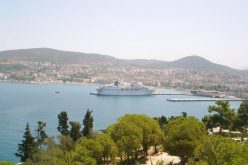
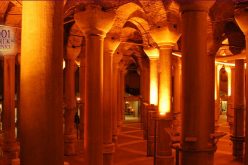

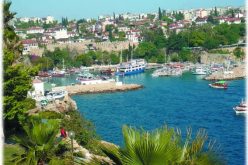
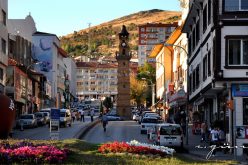
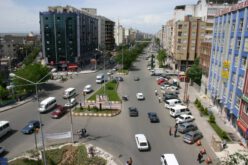
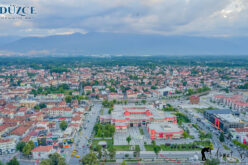


Best city all around the world.